In 2011, 2012, and 2013, I attended an in-person conference at the Royal Geographical Society in London called WildPhotos. It was two days where I could completely immerse myself in learning more about nature photography.
These were weekends full of inspirational talks and impressive images from hugely successful and creative photographers from all over the world – many of whom had received recognition at the Wildlife Photographer of the Year Awards. I felt gutted when they pulled the plug on WildPhotos, as it gave me an excuse to geek out on nothing but wildlife photography for two days straight every year.
So, I’m sure you can understand my delight when WildPhotos returned to celebrate the 60th anniversary of Wildlife Photographer of the Year. This time, the event was a one-day symposium held in Bristol and online on Sunday 13th October. And, as with the previous conferences, it provided me with much to consider about my own photography and the stories I want to tell.
I won’t cover every point made by the speakers here, particularly as many related specifically to conservation photography. Instead, I’ll share my main takeaways from the day and how these could be incorporated into whatever area of wildlife photography interests you.
Connection is key
Wildlife photojournalist, filmmaker and adventurer Morgan Heim considered how we build a connection between our subject and the person viewing our images. She pointed out that we need to look for ‘the moment’. This is when our photography moves from access (having the ability to capture photos of our subject) to acceptance, where the animal feels comfortable enough to ignore us and interact with the world around it. Examples of this ‘moment’ could be a disagreement between siblings (as shown in the featured image of red foxes on this page), a parent caring for its offspring, or the interaction between a mated pair.
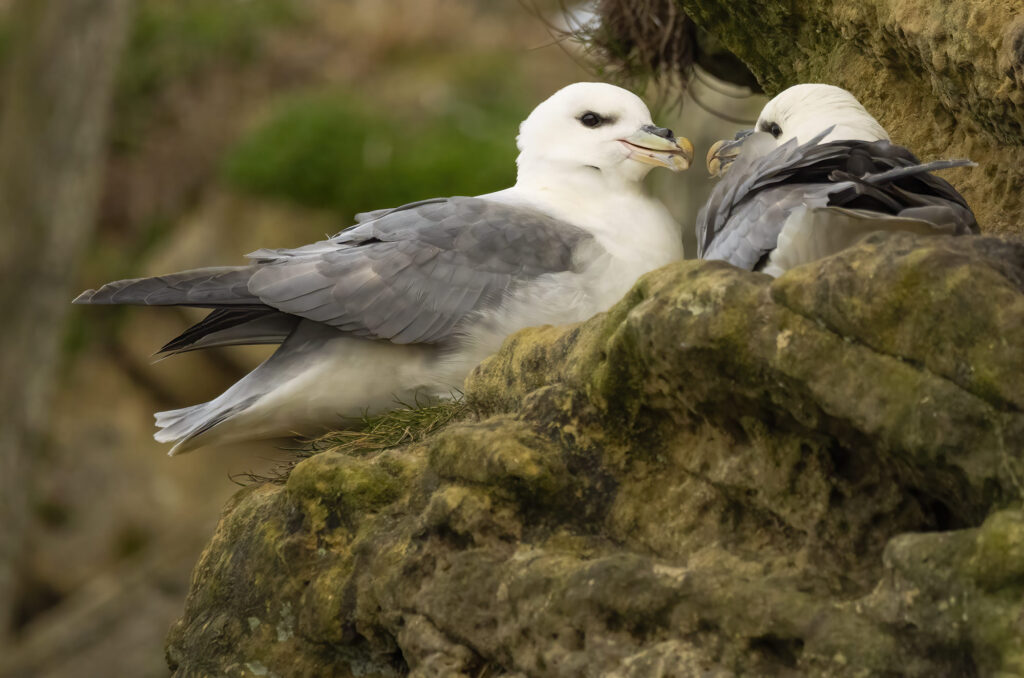
While I sometimes feel that there is merit in an image where the subject is staring straight down the lens at the photographer, I do agree that capturing natural behaviour is more rewarding and helps to tell your subject’s story. This was part of the reason I invested in a thermal monocular to photograph the local roe deer, and it has already enabled me to capture moments that I would have struggled to get without the warning of the deer’s presence in the woods that using a thermal device provides.
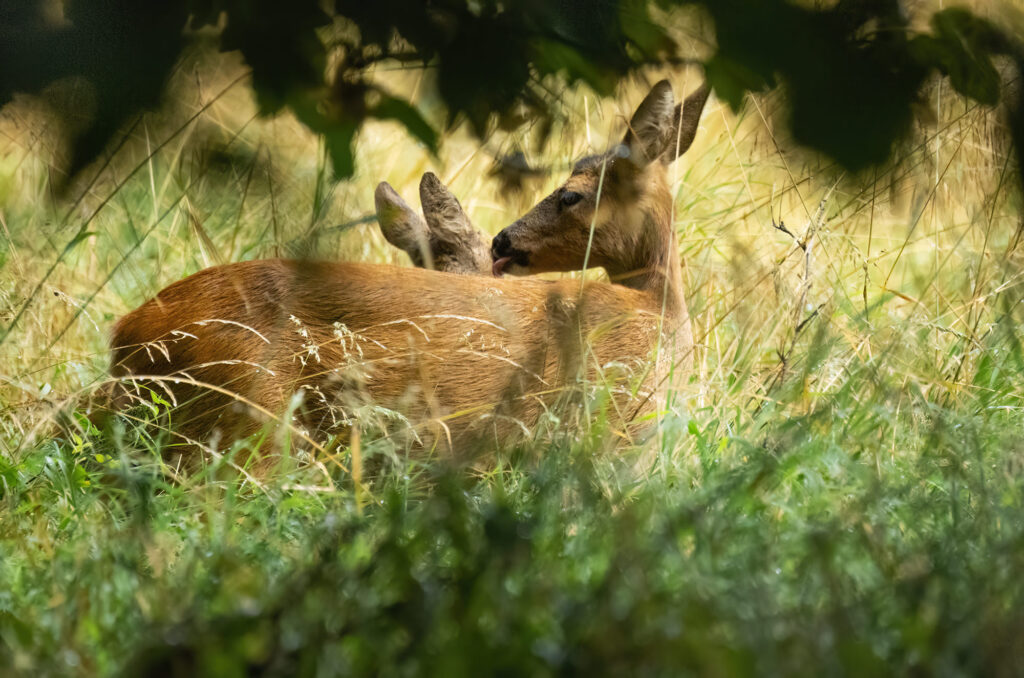
In her talk, Morgan also noted that we can build empathetic stories by following the individuals working with wildlife e.g. the scientist, researcher, rescuer, or hunter. For conservation photojournalism, in particular, we mustn’t forget that humans connect with human stories.
This relates to another interesting point about getting people to connect with your images. In his talk in the ‘Water World’ section of the day, Tony Wu advocated incorporating anthropomorphism into your images. He explained that, although we’re often told not to make our animal subjects appear to have human traits, certain characteristics (play, friendship, showing off, etc) are apects that we have in common with animals. Tony noted that if we think of ourselves as separate from nature, it shows in our photos. He argued that we should portray the differences between humans and other species to educate people, but also highlight the similarities to get people to connect and care.
For example, one of my favourite images from my encounter with local otters back in May 2022 was the one below, where the female has her eyes closed as her cub climbs all over her. I’m sure many parents can relate to her seeming exasperation at her offspring’s antics and, I would therefore hope, it would at least raise a smile from them.
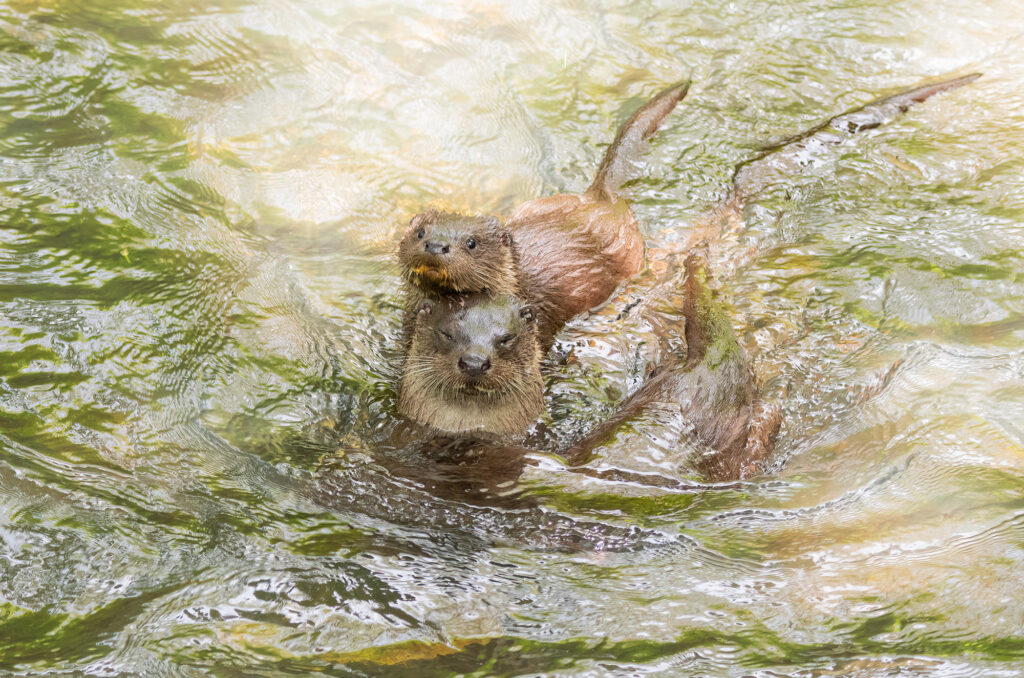
Make overlooked species the heroes
Many of the speakers highlighted the importance of shining a spotlight on often overlooked species and habitats, including Canadian marine conservation photojournalist Shane Gross whose image of tadpoles won him the title of Wildlife Photographer of the Year 2024. Again, I think a lot of this comes down to creating a connection, so that the viewer has to pay attention.
A suggestion for achieving this was to show people something familiar in an unfamiliar way. Ingo Arndt, for example, shared images he’d captured from inside a natural honeybee nest – not something many of us would get to see! Showing a different view is something I tried to do while photographing a long-tailed tit nest earlier this year. As this nest was partially exposed in a bush, I could photograph the birds’ nest-building activity using my long lens without disturbing them. I hoped it would show just how delicate but strong these incredible structures are, and the work that goes into building them out of cobwebs, moss, and lichen.
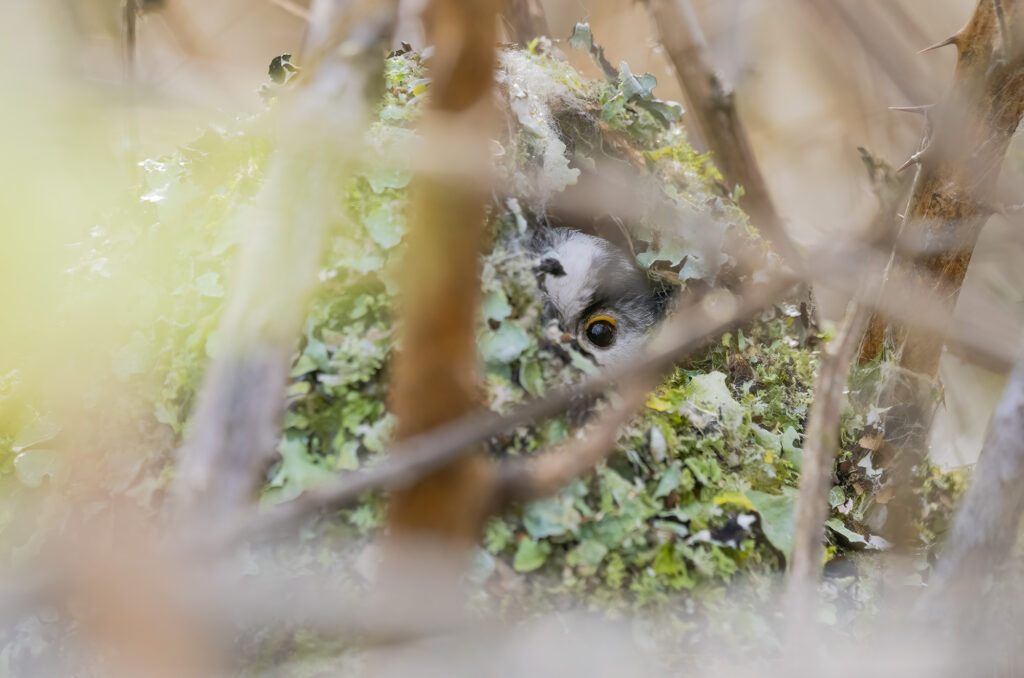
Tell your subject’s story through human eyes
While all the presenters highlighted the importance of narrative in our images, it was keynote speaker Charlie Hamilton James who made that point best. He noted that we need to tell the full story of our wildlife characters to get people to care about them. Humans connect to imperfection and vulnerability. So, during My Halcyon River, Charlie showed the animals having flaws and making mistakes, which hadn’t been done in wildlife filmmaking before.
But he also revealed that another turning point for him was when he started to capture images that showed the animals as humans see them. For example, he photographed kingfishers with slow shutter speeds to capture motion blur, like the flash of blue we see when a kingfisher speeds past us down a river. It was this realisation that led him to more success with his photography.
This is also something I am currently exploring with my roe deer images, as I want to show their true character – such as highlighting how adept they are at camouflaging themselves while in plain sight.
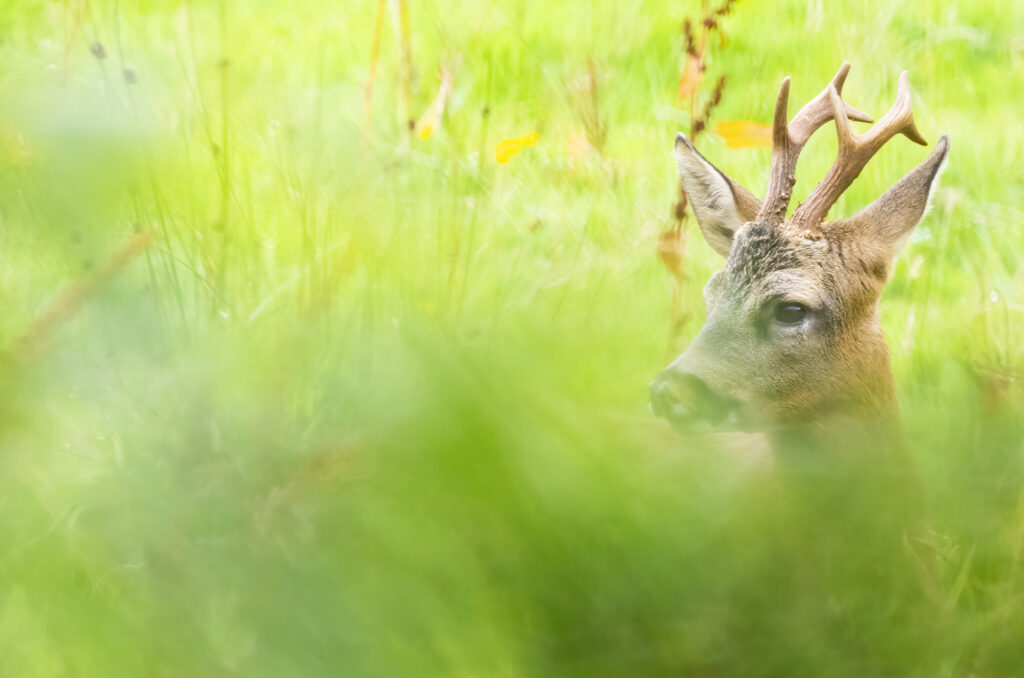
Moving to motion?
There were also sessions on using video and pitching conservation stories and both had a similar takeaway for me. While being multi-talented is always welcome from a potential editor’s point of view (e.g. being able to fly a drone, shoot b-roll, etc) we must be careful not to miss ‘the moment’. As Peter Ndung’u noted, indecision about shooting video or stills in the field can mean you end up without decent images or footage. Video is something I am trying to incorporate more into my wildlife encounters, but I must be honest with myself (which was also encouraged by Peter) and say that I much prefer shooting stills.
I hope this is a useful summary of some of the key points from the presentations. Let me know what you think by leaving a comment below.
Oh, and one final plea from world-renowned photographer Britta Jaschinski to the audience – please don’t ever give your photographs away for free. And when we’ve put that amount of emotion and energy into our images, why on earth should we?

